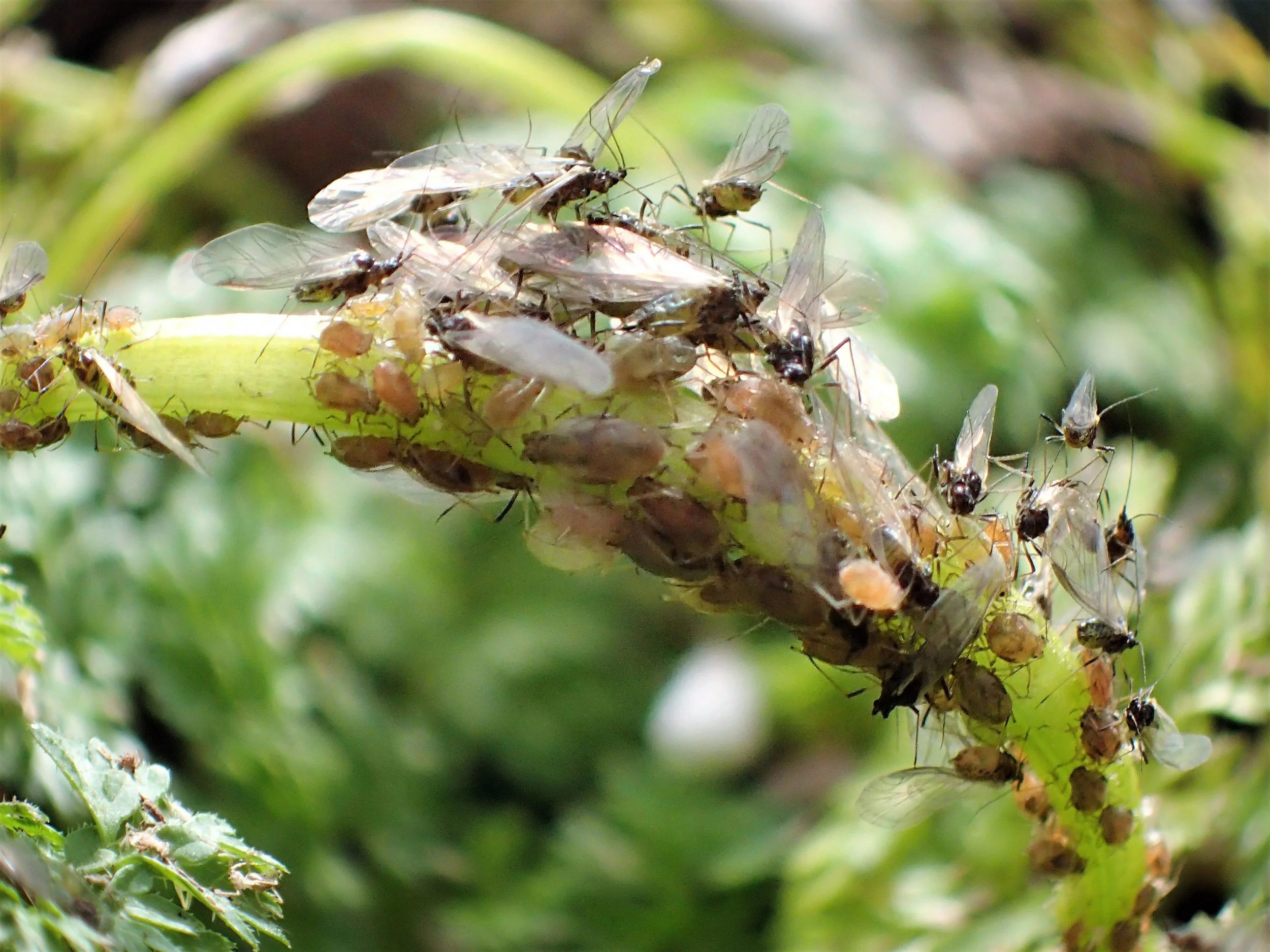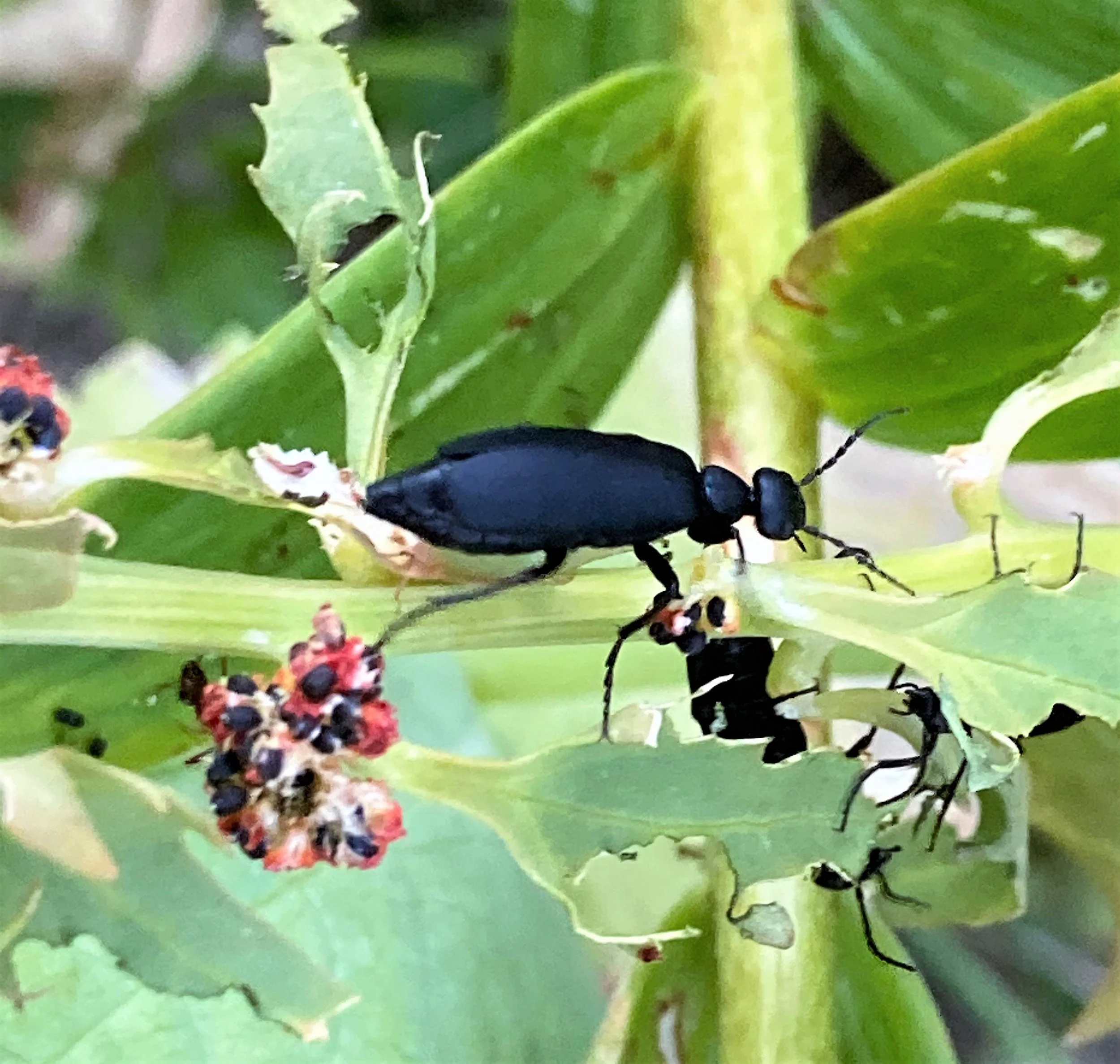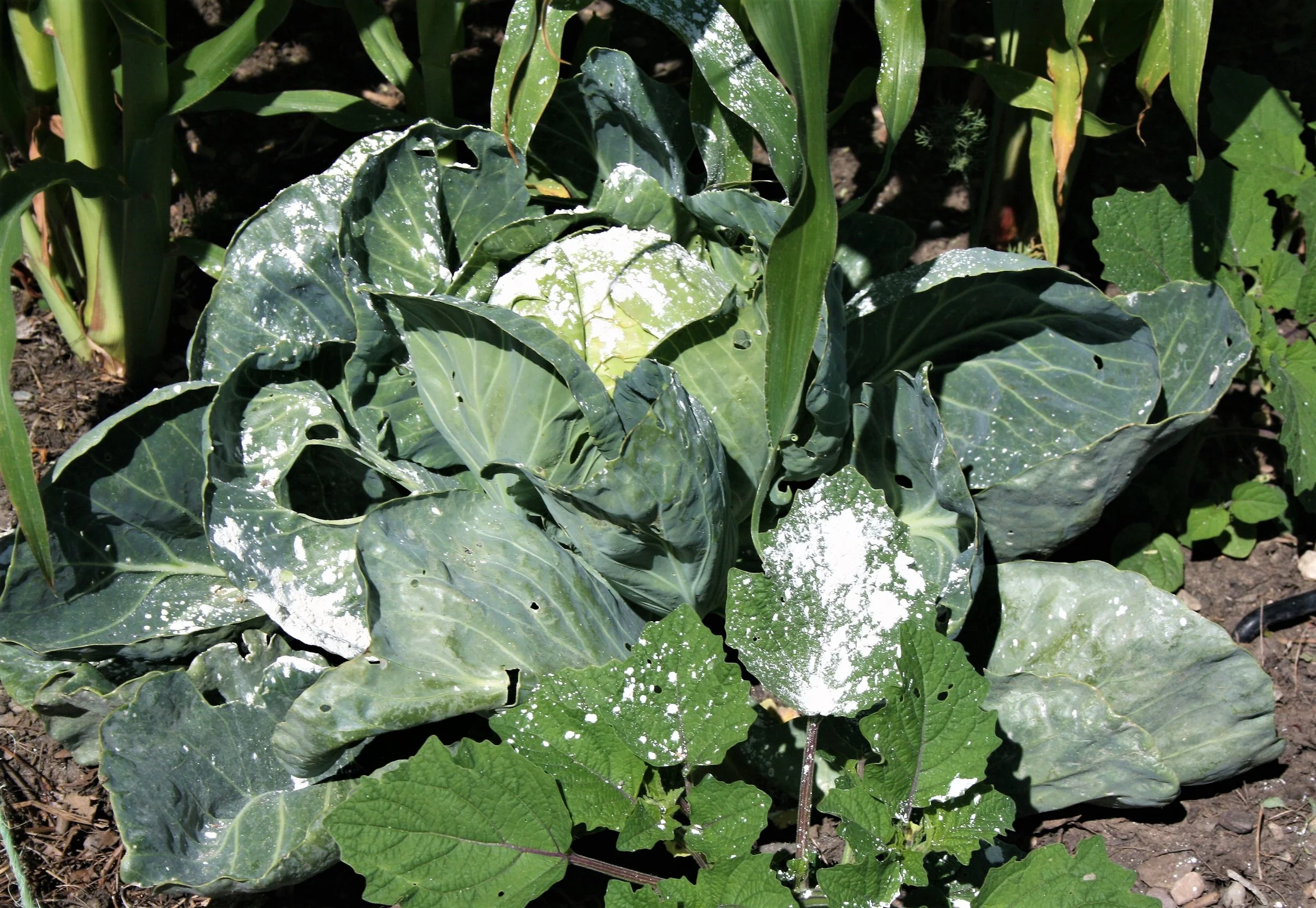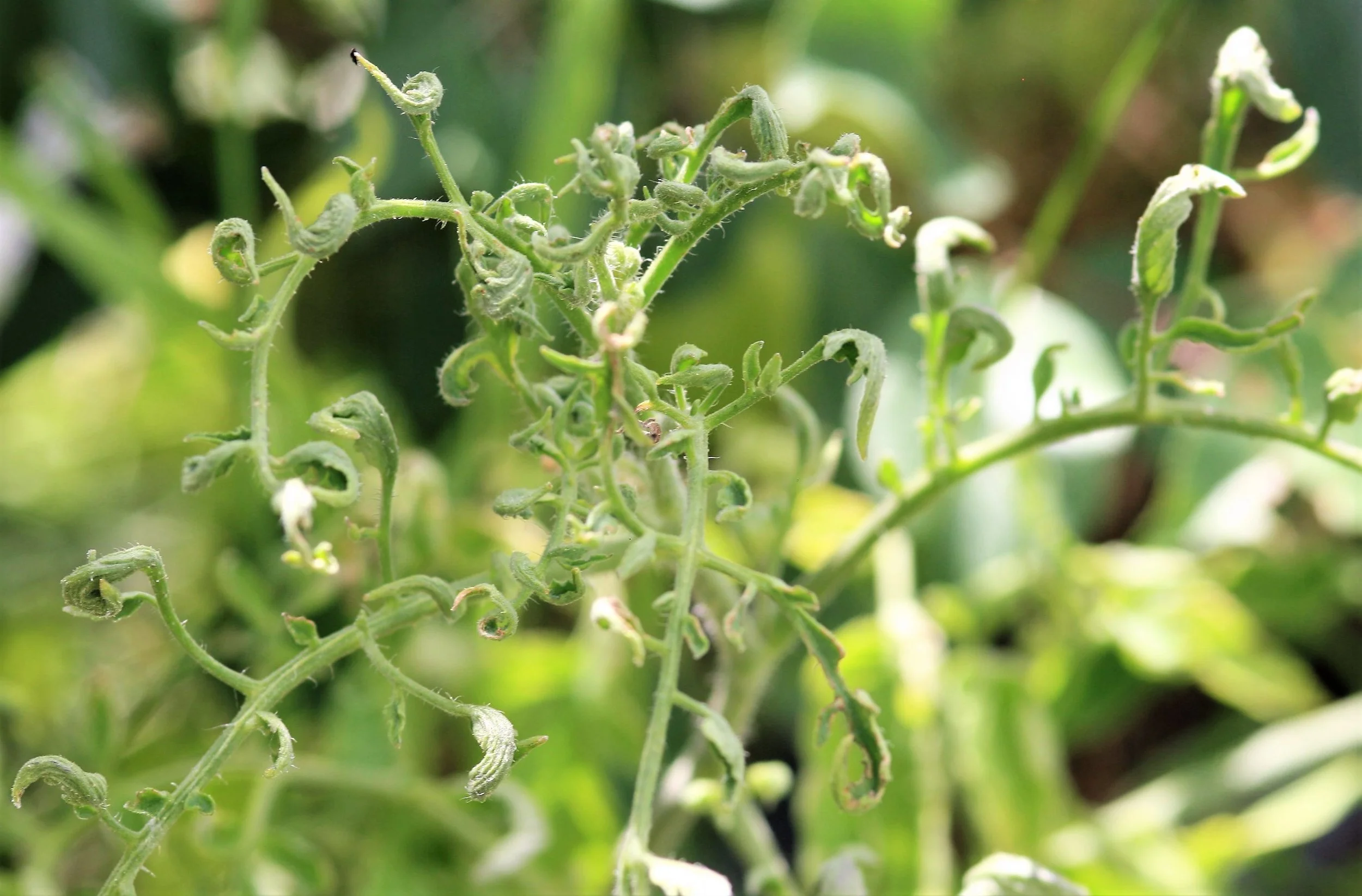Protecting Produce from Pesty Problems
Across Montana
Written by and photographed by Amy Grisak
It's the height of summer and gardening should be easy, right? The risk of frost has passed and it's not quite late enough to worry about another, yet this is also when the bugs and other issues cause us concern. The key to managing both is pinpointing the problem and knowing how to handle it.
Prevalent Pests
One of the most common gardening questions is, “What is eating my plants?” There are situations where this is painfully obvious, such as when grasshoppers jump in every direction when you walk into the garden. Other times, it seems that one day the plant looks absolutely fine, and the next the leaves are chewed and haggard. To help identify the offender here are a few of the most prominent pests at this time of the season.
Grasshoppers - Some years grasshoppers descend upon our gardens at biblical levels eating everything in their path. Although we don't know what the season may be like, it’s a good practice to spread Nosema locustae, often called Nolo Bait, in the spring when the grasshopper nips are 1/2 inch long. By doing this for several years, you'll notice a distinct reduction in the population. Nosema locustae is a type of protozoa that affects the digestive system of the grasshopper, and the beauty is when the grasshoppers die, they are cannibalized, and it continues to the next batch. Unfortunately, by the time we hit mid-summer we just have to deal with very hungry adults. Outside of using a flamethrower out of sheer frustration, the best course of action is a barrier, such as a lightweight floating row cover. It might not prevent every grasshopper from reaching the plant, but it helps significantly.
Aphids - Regardless of the time of the year, aphids can be problematic. At low levels they don't do much harm to a plant, but there comes a point where too many of them weaken it and reduce production. The easiest way to deal with them is through a blast of water by the hose, along with rubbing them off with your fingers. The good news is they are weak and die easily. If this doesn't work, step up the effort by spraying the crop with an insecticidal soap.
Blister Beetles - There's nothing subtle about blister beetles. One minute your chard or beets are fine, and the next day these black insects are devouring the leaves. And they are called blister beetles for a good reason. If you try to handle them manually, they secrete a substance that can cause blistering on the skin. The best way to take care of them is to suck them up with a Shop-Vac.
Earwigs - Earwigs look like something out of a horror movie. Roughly an inch long, they have menacing looking pinchers called cerci on their hind ends that are used for defense and to grab prey. While they typically consume decaying matter, they are happy to eat fresh vegetables. Corn is a particular favorite, and it’s shocking when earwigs spill out en masse from a pulled back husk. If earwigs are an issue, the first step is to minimize where they hide by removing flat pieces of stone or wood. Trapping is also effective using a small dish with oil or even killing them in their hiding spots. Diatomaceous earth does a fine job of discouraging earwigs. Another option is to use a Spinosad based pesticide. Spinosad is a soil bacterium discovered by a vacationing scientist in an abandoned rum distillery in the Caribbean in 1985. (Because, of course, what else do scientists on vacation do other than take soil samples?) Spinosad affects the nervous system of insects and caterpillars yet is safe for animals and humans.
Cabbage Loopers - Although they are called cabbage loopers, these pale green caterpillars love any Brassica. About the only good thing concerning these larvae of the owlet moth family, is they are fairly easily controlled. One option is to place floating row cover over the desirable plants to prevent the moth from laying eggs in the first place. If you miss this window of opportunity, diatomaceous earth works extremely well. Finally, it's possible to plant cabbage, cauliflower, and broccoli later in the season to step away from the moth’s lifecycle altogether. If you do have plants with a fairly heavy infestation, it's okay to eat around the damage, even though they chew through leaves, and in the case of cabbage, defecate within the plant, which is not appealing. Just do your best to remove any affected areas and definitely keep a close eye out for the caterpillar before you cook anything. It's very difficult to coax your children into eating their broccoli when there is a poached caterpillar clinging to the stem!
Slugs - If you find new plant damage in the mornings, there's a good chance it is due to slugs. They prefer the cool evenings to slither out and feed. One option is to set traps using tuna fish cans filled with approximately one-half an inch of beer. Bury these at ground level and they will die happy. Diatomaceous earth also dissuades them, as well as strips of copper that can sometimes be found in garden centers. Slugs have delicate skin, which is why sharp barriers work well.
Diagnosing Plant Problems
We are fortunate in our semi-arid climate to have fewer disease issues than many parts of the country, but this doesn't mean that we escape plant health challenges completely. Here are a few problems to watch out for towards the end of the summer.
Powdery Mildew - If it looks like someone dusted your plants with talcum powder, it's probably powdery mildew. This is one of the most common fungal infections and it is prominent in warm, dry climates. Powdery mildew is very common within the squash family, but it can show up on cucumbers, peppers, beets and even tomatoes. As with any fungal issue, one of the most important preventative measures is providing enough air circulation between plants. Another way to be proactive is to buy varieties that have a resistance to the infection. In many cases it's not necessary to treat them, particularly at the end of the season when production is waning, but if it's early enough in the summer, apply a fungicide or horticultural oil to at least slow the progression.
Blossom End Rot - One of the most common complaints when it comes to growing tomatoes is blossom end rot. While this is more of a systemic issue rather than a disease, people want to know why the bottom of perfectly beautiful tomato is brown and leathery. The primary cause of blossom end rot is a lack of calcium, whether it’s because there is not enough available in the soil or because inconsistent watering doesn't allow the plant to utilize what is there. The best thing to do now is to water as evenly as possible. This is especially true in container plants. The second action is to add more calcium to the soil. There are amendments found at gardening centers, but crushed eggshells work equally as well. It takes many months for them to become available so this is not a quick fix, but it should help eliminate this problem in the future
Herbicide Damage - We do our best to amend the soil with manure or mulch with straw, but sometimes what we add actually harms the plants. It's well-known that manure should be well aged before mixing into the garden, but it's very important to know your source. There are situations, particularly when horses are fed weed seed free hay, where the herbicide persists for well over five years. This means that perfectly fine looking manure is deadly. The primary telltale signs of herbicide damage often show up in the Solanaceae family, and the leaves of tomatoes, peppers, eggplant and potatoes curl and grow misshapen. Unfortunately, there is no quick fix. Remove the plants and as much of the manure or tainted straw mulch as possible and plant again next year.
While this list of potential problems might seem daunting, don’t be discouraged. Just keep an eye on your plans. You know when something doesn't look healthy. Early detection is the best way to stop an issue and continue garden production long into the season.







